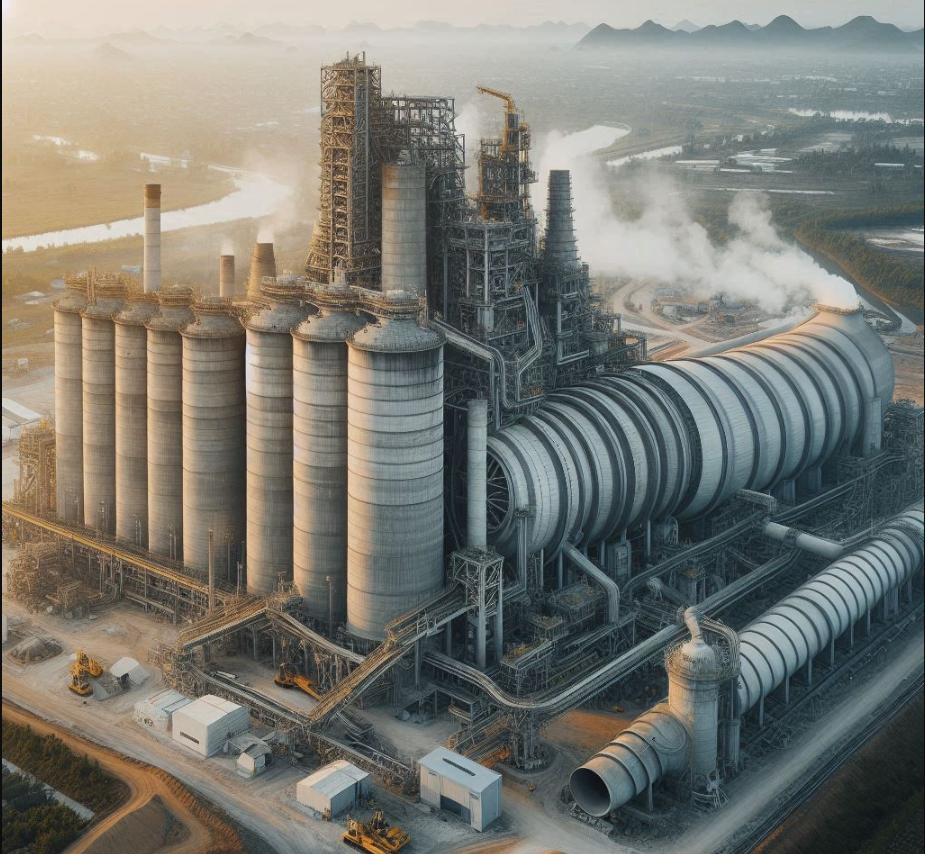Contents
Comparison about the Most Popular Cement Kilns in the world

TO Download this post and all the books and excel sheets and my personal notes and presentations I collected about cement industry in the last 30 years click the below paypal link
Introduction
Cement kilns are critical components in cement production, where raw materials are processed at high temperatures to produce clinker, which is then ground to make cement. This report provides an overview of some of the most popular cement kiln models, including their manufacturers, capacities, maintenance methods, and estimated prices. This information is essential for procurement and maintenance teams in the cement industry.
Popular Cement Kiln Models
- FLSmidth ROTAX-2® Rotary Kiln
- Manufacturer: FLSmidth
- Model: ROTAX-2®
- Capacity: Up to 12,000 tpd (tons per day)
- Maintenance Method:
- Regular Inspections: Visual inspections and thermography to identify hotspots.
- Refractory Maintenance: Regular monitoring and replacement of refractory linings to prevent wear.
- Alignment and Balancing: Ensuring the kiln is properly aligned and balanced to reduce stress and wear.
- Estimated Price: $5 million – $15 million
- KHD Humboldt Wedag PYROFLOOR® Kiln
- Manufacturer: KHD Humboldt Wedag
- Model: PYROFLOOR®
- Capacity: Up to 10,000 tpd
- Maintenance Method:
- Cooling System Checks: Regular maintenance of the PYROFLOOR® clinker cooler.
- Kiln Shell Monitoring: Using laser scanners to monitor kiln shell deformation.
- Lubrication: Ensuring all mechanical components are properly lubricated.
- Estimated Price: $4 million – $12 million
- Polysius POLRO® Rotary Kiln
- Manufacturer: ThyssenKrupp Industrial Solutions (Polysius)
- Model: POLRO®
- Capacity: Up to 8,000 tpd
- Maintenance Method:
- Component Checks: Regular inspection of tyres, rollers, and gears.
- Kiln Drive Maintenance: Monitoring and maintaining the kiln drive system to ensure smooth operation.
- Refractory Monitoring: Routine checks and repairs of the refractory lining.
- Estimated Price: $3 million – $10 million
- CEMEX PHT Kiln
- Manufacturer: CEMEX
- Model: PHT (Preheater Technology)
- Capacity: Up to 9,000 tpd
- Maintenance Method:
- Preheater Maintenance: Regular cleaning and maintenance of the preheater system to ensure efficiency.
- Burner Maintenance: Periodic checks and maintenance of the burner to ensure optimal fuel usage.
- Inspection of Structural Components: Regular inspections of structural components to prevent unexpected failures.
- Estimated Price: $4 million – $11 million
- FIVES Pillard RotaFlam® Kiln
- Manufacturer: FIVES Group
- Model: Pillard RotaFlam®
- Capacity: Up to 10,000 tpd
- Maintenance Method:
- Burner Maintenance: Regular inspection and maintenance of the RotaFlam® burner system.
- Refractory Management: Continuous monitoring and management of the refractory lining.
- Mechanical Component Inspections: Routine checks of gears, tyres, and rollers.
- Estimated Price: $3 million – $9 million
Comparison of Popular Cement Kilns
| Model | Manufacturer | Capacity (tpd) | Maintenance Methods | Estimated Price |
|---|---|---|---|---|
| ROTAX-2® | FLSmidth | Up to 12,000 | Inspections, Refractory Maintenance, Alignment | $5M – $15M |
| PYROFLOOR® | KHD Humboldt Wedag | Up to 10,000 | Cooling System Checks, Kiln Shell Monitoring, Lubrication | $4M – $12M |
| POLRO® | ThyssenKrupp (Polysius) | Up to 8,000 | Component Checks, Kiln Drive Maintenance, Refractory Monitoring | $3M – $10M |
| PHT | CEMEX | Up to 9,000 | Preheater Maintenance, Burner Maintenance, Structural Inspections | $4M – $11M |
| Pillard RotaFlam® | FIVES Group | Up to 10,000 | Burner Maintenance, Refractory Management, Mechanical Inspections | $3M – $9M |
Detailed Maintenance Methods
- Regular Inspections:
- Visual Inspections: Routine visual inspections to identify signs of wear, cracks, and other anomalies.
- Thermography: Using thermal imaging to detect hotspots and uneven heat distribution.
- Refractory Maintenance:
- Monitoring: Continuous monitoring of the refractory lining for wear and damage.
- Replacement: Regular replacement of worn-out refractory bricks and linings to prevent failure.
- Alignment and Balancing:
- Laser Alignment: Utilizing laser alignment tools to ensure the kiln is correctly aligned.
- Balancing: Regularly checking and balancing the kiln to reduce mechanical stress.
- Cooling System Checks:
- Clinker Cooler Maintenance: Regular maintenance of clinker coolers to ensure efficient cooling of the clinker.
- Heat Exchanger Maintenance: Ensuring heat exchangers are clean and functioning properly.
- Lubrication:
- Lubrication Schedules: Implementing regular lubrication schedules for all moving parts.
- Quality Lubricants: Using high-quality lubricants to ensure optimal performance.
- Component Checks:
- Tyres and Rollers: Regular inspection and maintenance of tyres and rollers.
- Gears and Bearings: Monitoring gears and bearings for signs of wear and ensuring they are well-lubricated.
Conclusion
Cement kilns are vital for cement production, and choosing the right kiln model is essential for efficiency and longevity. This report has highlighted some of the most popular kiln models, their capacities, maintenance methods, and estimated prices. Manufacturers like FLSmidth, KHD Humboldt Wedag, ThyssenKrupp, CEMEX, and FIVES Group offer reliable and high-capacity kilns suitable for various cement manufacturing needs. Proper maintenance is crucial to ensure the continuous and efficient operation of these kilns, ultimately leading to reduced downtime and operational costs.
References and Sources
- FLSmidth ROTAX-2® Rotary Kiln – FLSmidth
- KHD Humboldt Wedag PYROFLOOR® Kiln – KHD Humboldt Wedag
- ThyssenKrupp Polysius POLRO® Rotary Kiln – ThyssenKrupp Industrial Solutions
- CEMEX PHT Kiln – CEMEX
- FIVES Pillard RotaFlam® Kiln – FIVES Group
This report is designed to be a comprehensive guide for industry professionals involved in the procurement and maintenance of cement kilns, providing detailed information to aid in decision-making and operational planning.
